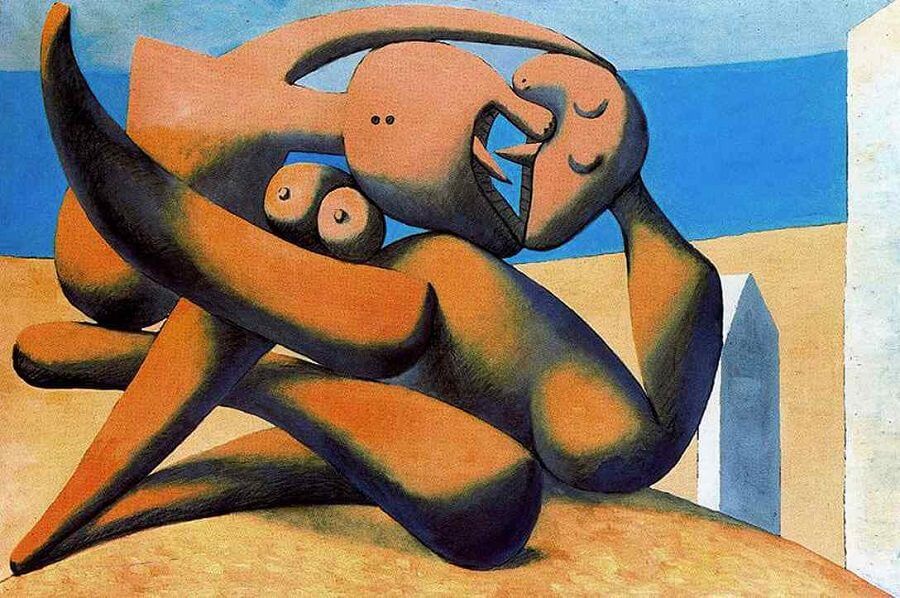Figure At The Seaside, 1931 by Pablo Picasso
A series of bizarre erotic beach scenes, including The Kiss, was painted in the summer of 1931 at Picasso's French Riviera vacation resort, Juan-les-Pins. Said to be inspired by the 50-year-old painter's liaison with 19-year-old model, Marie-Therese Walter, the grotesque nature of the depicted forms reduces this moment of intimate contact to a level of crudity, probably more representative of his deteriorating relationship with his wife, Olga.
The praying mantis-like head of the two figures was a popular image with the Surrealists because the perverse concept of the female insect-eating her mate after intercourse provided another visual metaphor of the 'life and death' paradox. Here, the heads incorporate Picasso's obscene vagina dentatta teeth imagery, as well as penile tongues.
The oblique and ironic reference to classicism is offset by references to recent Surrealist painting, especially the monstrous figure paintings of Joan Miro and Salvador Dali, who, like Picasso, were masters of the grotesque. Paintings of both Surrealists may have influenced Figures at the Seaside, but the parallels with Dali are even closer. A friendship had developed following the charismatic Dali's first visit to Picasso's studio in 1926, but Dali only became a force to be reckoned with following the private screening of Un Chien andalou (which he made with Luis Buhuel) in the Studio des Urselines in June 1929. (Picasso was in the audience.) Dali's rise within Surrealist circles was meteoric thereafter. The Enigma of Desire, 1929, shown at his sensational debut exhibition at the Galerie Goemans in November 1929, makes an intriguing pair with Figures at the Seaside not just because it too is concerned with sexual desire, but because of the explicitly sculptural treatment of the giant rock, which doubles as a self-portrait head trailing a monstrous punctured and pitted tumor inscribed repeatedly with the Oedipal cry 'ma mere, ma mere'. Dali's illusionistic tricks, pseudo-academic polish and miniaturist attention to detail are a far cry from the simplified, reductive style of Figures at the Seaside, but Picasso would surely have been receptive to the perverse coupling of outrageous psychoanalytical imagery with a superficially conventional style.





















